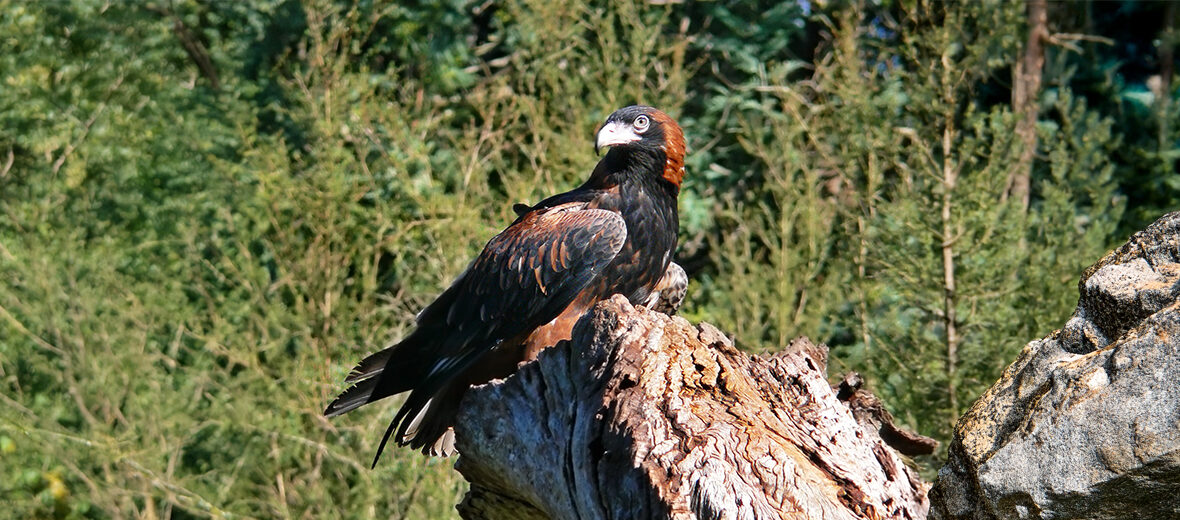
The black-breasted buzzard can be found throughout most of mainland Australia. These large raptors are a common sight throughout their range. They face the threats of habitat loss and destruction at the hands of the logging industry, fires, and fire suppression; hunting; trapping; and climate change, which can cause severe droughts. Their population trend is listed as decreasing. However, due to their abundant numbers, the IUCN lists these raptors as Least Concern.
First the Stats…
Scientific name: Hamirostra melanosternon
Weight: Up to 2.93 lbs.
Length: Up to 24 inches
Wingspan: Up to 5+ feet
Lifespan: Up to 24 years
Now on to the Facts!
1.) They were first described by John Gould in 1841.
2.) Their calls consist of either a repeated hoarse yelping, or a short, sharp yap or yelp. Females produce a soft drawn-out wheezing call to signal their intent to breed.
3.) The preferred locations to dwell are wooded and open habitats, riparian forests, and tall-open woodlands surrounded by mid-dense shrublands. They’re also found among river red gum trees.
4.) These raptors mainly prey on reptiles, mice, rats, and birds. They will also raid bird nests to steal eggs and nestlings, including other raptor species’ nests. Carrion (dead animals) is also consumed along roadsides.
5.) These buzzards are monogamous (mate for life).
But wait, there’s more on the black-breasted buzzard!
6.) Nests are built from dead sticks and leafy branches, with the various materials gathered from the ground or broken off trees and carried to the nest site via feet or beak.
7.) Their nest can measure up to 3.94 feet long by 2.62 feet wide by 1.31 feet deep.
Did you know…?
Black-breasted buzzards are famous for their use of stones to crack the eggs of large ground-nesting birds like the Emu. The stones are either dropped onto the egg(s) or thrown at them to crack them open, revealing the tasty insides.
8.) Eggs are laid from August – October.
9.) 2 eggs are laid up to 13 days apart, and hatch in up to 38 days.
10.) Just 1 chick survives to fledge in up to 73 days.
But wait, there’s still more on the black-breasted buzzard!
11.) Fresh leafy branches are placed in the nest in what is believed to be an aid in parasite and pathogen control, and/or to reduce bacteria growth.
12.) The estimated overall population of these buzzards in Australia is believed to be approximately 10,000.
13.) Causes of population declines in raptor species of the arid and semi-arid regions of Australia include landscape changes at the hands of extensive pastoralism and clearing of native vegetation; overgrazing by livestock, feral animals, and increased kangaroo populations.
14.) Other causes of decline are due to altered fire regimes; the introduction of destructive feral predators like house cats and red foxes. The cessation of traditional Aboriginal hunting and land management practices is also to blame.
Now a Short Black-Breasted Buzzard Video!
Be sure to share & comment below! Also, check out the Critter Science YouTube channel. Videos added regularly!
Want to suggest a critter for me to write about? Let me know here.
Some source material acquired from: Wikipedia & IUCN
Photo credit: Benjamint444




